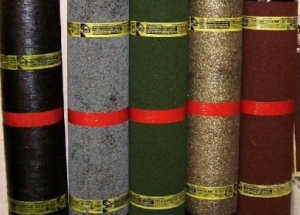The ruberoid is a reliable, proven roll material for decades, used for waterproofing not only roofs, but also cellars or foundations. The main technical characteristics of roofing materials make it universal and in demand in private construction.
Content
The construction market is striking in the variety of modern construction and finishing products. But there are always reliable, time-tested materials that do not lose their relevance and are in demand for many years. This material is roofing material - a roofing material with a history of use in construction for more than 80 years. It was based on roofing cardboard with initial impregnation with soft bitumen and then applying refractory bitumen on both sides of the sheet to increase the waterproofing characteristics. The face of such a material can have a protective coating of sand, asbestos, talc.
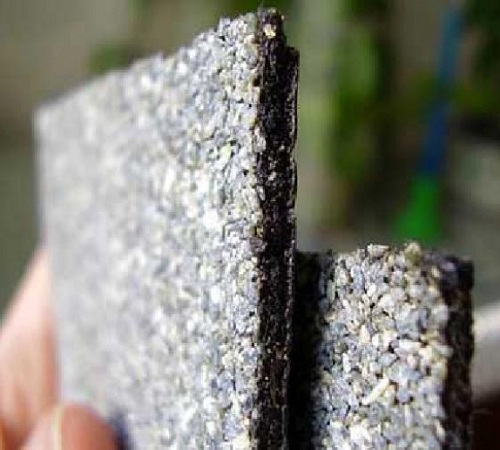
Naturally, with the use of modern technologies, the quality and technical characteristics of roofing felt have significantly improved, it meets all the practical requirements imposed by consumers for all insulation materials.
Now the basis is mostly PVC fabric and fiberglass, due to which the strength and durability of the material (from 10 years earlier to 20 years in modern conditions) have increased.

Standard marking of roofing material
Depending on the materials used in the production, as well as its purpose and types, the entire roofing material is marked, the technical characteristics of which are prescribed in GOST 10923-93.
Marking according to purpose:
- "Р" - roofing felt ordinary
- "P" - ruberoid lining
- "K" - roofing roofing material
- "E" - ruberoid elastic
Varieties of ruberoid by type of protective coating
- "K" - coarse-grained covering of the outer layer. Fits on cold and hot mastic.
- "Ч" - scaly powder, it is one-sided and two-sided. One-sided varieties are laid exclusively on hot mastic.
- "M" is a fine-grained powder. The ruberoid can be laid on cold and hot mastic.
- "P" is a pulverized powder. Can be bilateral or one-sided.
- "C" - colored powder.
- "O" is a one-sided powder.
The ruberoid "M" is used for laying the lower and middle layers.
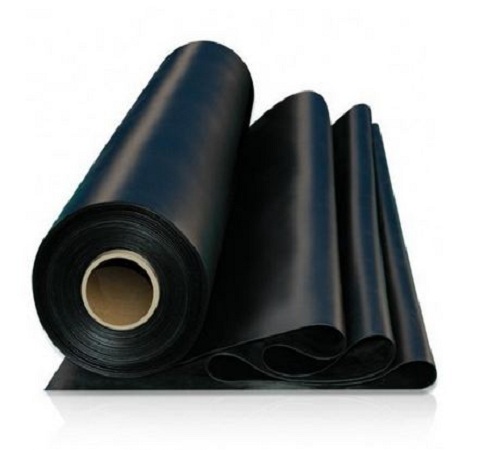
For the top layer, it is recommended to use a ruberoid with a sprinkling of marking "K" or "P".
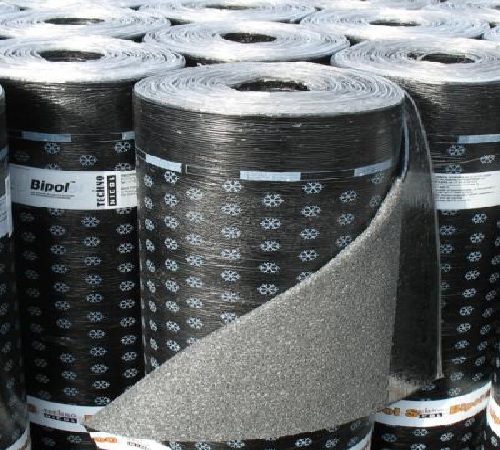
Depending on the scope and destination, the roofing material is available with a different density of the base sheet. It is this characteristic that is taken for the main element of the marking. At the end of the marking order, the letters are numbers 300, 330, 350, 400. They denote the density of the main layer of roofing material - weight in grams per 1 m 2. Consequently, the higher this figure, the greater the density, the better the practical and operational characteristics. For example: RCCH - 350 Ruberoid Roof Scale 350 g per m 2.
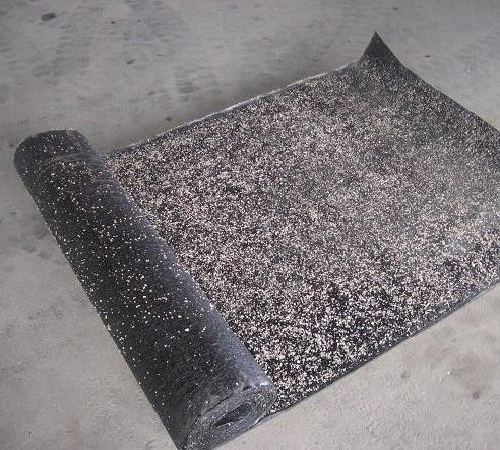
It should be noted that the old generation ruberoid is marked in accordance with GOST. Currently, leading manufacturers add and set their specifications (technical specifications). This is due to the use of different bases, additional protective elements and other characteristics.
The main modifications of ruberoid
The leading manufacturer of roofing felt is the company Technonikol, although other well-proven brands are also on the construction market. Modifications of such roofing material are somewhat, for example, the ruberoid Technonikol produces such variations:
Rubemast. It is a fused, improved roofing material, its base is the roofing cardboard, on both sides of which a protective waterproofing layer of viscous bitumen is applied. The application of a thicker layer of astringent bitumen from the underside of the canvas, distinguishes rubemast from an ordinary roofing material. The lower layer of knurling helps to increase the plasticity of the product and prevents the formation of cracks. On the front surface of the material is coarse-grained, and on the inside is a dusty dusting. The inner layer of rubaste is protected by a polymer film. Used for rolling the top or bottom layer of the roofing.
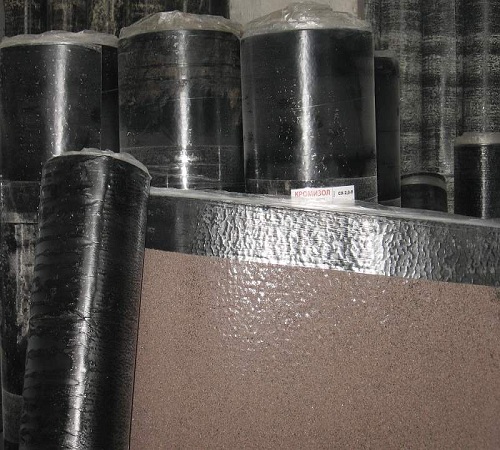
Glass-ruberoid (glass-insulating glass or glass-mastic). Sometimes it is called an armored ruberoid. This modification is similar to the rubemaster, but instead of roofing cardboard manufacturers use a fiberglass foundation with two-sided application of astringent bituminous protective layer. Such a waterproofing material is coated on one or two sides with a continuous layer of powder. From ordinary roofing felt it is distinguished by its enhanced strength and biostability.
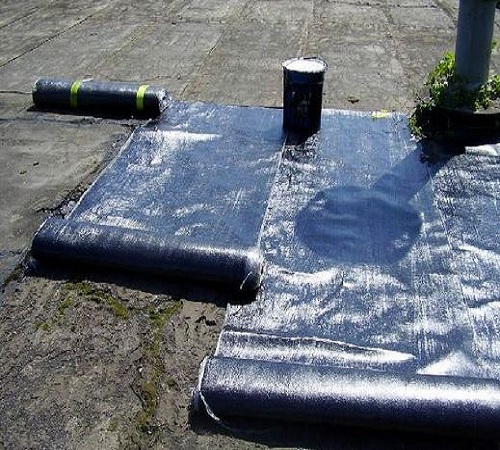
Euroruberoid. It is also a fusible modern material. It is based on fiberglass or polyester, impregnated with refractory bitumen, reinforced with polymer additives. Such ruberoid is very high quality: 1 m 2 the basis consumes 2-5 kg of impregnation. Polymer additives can be of two types: APP - atactic polypropylene and SBS - styrene-butadiene-styrene. Euroruberoid is characterized by complex protective coatings, excellent practical characteristics and long service life. This material was especially popular due to the low labor intensity of the work - the roofing with a ruberoid of this modification does not require additional application of mastic or bitumen.
The main characteristics are shown in the table. The modification of the RC is intended for the outer layer, PM - for the underlying layer:

Tol. Here the basis is taken roofing cardboard, which is thoroughly impregnated with liquid tar. The method of processing with bitumen remains the same. The mineral surface is applied to the front surface. The sphere of application is characterized by the same indices as the common roofing material, basically it is the top layer of the roofing carpet, or the device of the waterproofing layer to protect the building structures from moisture.
Along with conventional and fused varieties of roofing material, a separate category is presented on the market - liquid ruberoid. Mastics with polymer additives based on bitumen before use do not need to be mixed with other materials or strongly heated. Liquid ruberoid is used to repair the old or the device of a new roofing protective layer, it forms a monolithic, seamless coating with high penetrating protective properties. This kind of roofing material allows you to perform a quick installation and save money directly on the deck. The market price of liquid ruberoid is an order of magnitude higher than conventional roll analogs.
Manufacturing of roofing material
Roofing cardboard is used as a basis for roofing material - fibrous material obtained as a result of secondary processing of textile or wood raw materials. Such a substrate is impregnated with oil fusible bitumen BNS 45/80, 40/80, 60/90, 45/90 (softening point 35-50 0FROM). Further on process technology on both sides of the panel a protective layer of refractory bitumen BNK 90/10, 90/30, 90/40 (softening temperature from 80 0FROM). At the same time, to improve the quality characteristics, mineral filler is added: quartz sand, gypsum, chalk, dolomite flour, limestone powder.
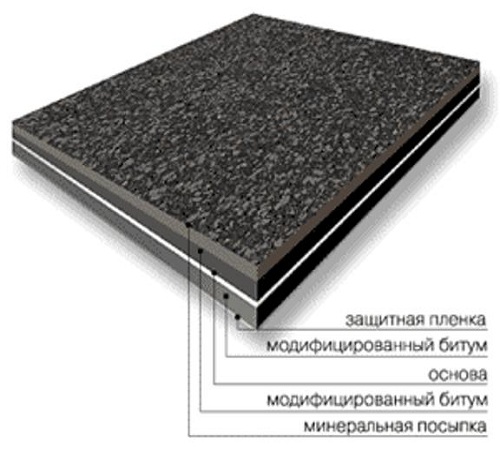
On the outer layer is applied a special coating. There are models of ruberoid, in which the coating is applied to both surfaces: internal and external. As such a powder are used:
- building sand (coarse or fine-grained)
- talcum powder or talcumagnesite;
- asbestos;
- colored coarse-grained powder from any species represented.
Depending on the density of the main material, roofing felt can be of two types: lining and roofing. The backing felt has a density of 300 g / m 2, roofing - 350-400 g / m 2.
The ruberoid is wrapped in rolls and packaged. The weight and dimensions of the roofing material vary depending on the density of the base material, impregnation and sprinkling: 20-40 kg. Standard width is 1 m, length is 20 m. The permissible dimensional divergence is 5 mm. Thickness varies within 0.25-5 cm. Different manufacturers can produce rolls with a width of 0.75 m; 1,025 m; 1, 05 m and lengths of 8, 15 and 20 m.
Each marking stamp is stamped with each manufacturer's name, GOST, year of manufacture and batch number.
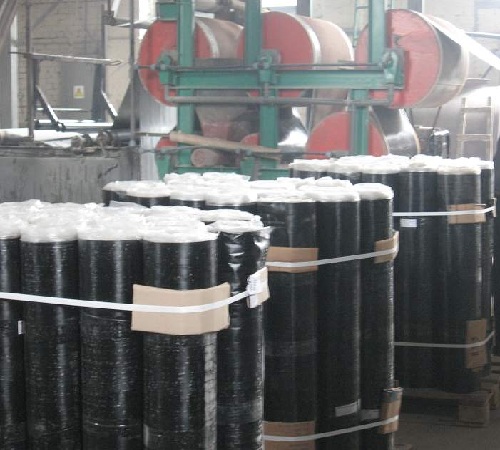
Nuances when choosing
- The linen of the roofing material must be unbroken, without cracks, tears, creases and holes. Small tears (up to 30 mm) are allowed only at the edges of the roll.
- The ruberoid in the roll is wound tightly, without blocking the layers. When winding, the ends of the roll should be even, without significant protrusions.
- Composite cloths can be present on the roll, but not more than two. At the same time, the length of the smaller piece is not less than three meters.
- The base of the ruberoid made of cardboard must be completely impregnated. In the cut, the ruberoid is black with a brown tinge, while the presence of light impregnated bitumen is not allowed. The coating layer should be applied evenly, with a continuous layer on both sides of the web.
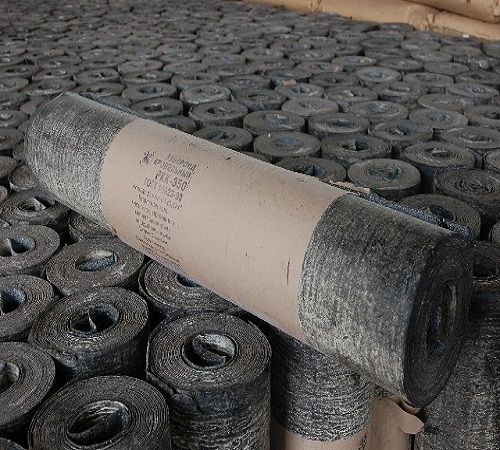
pros and cons of ruberoid
The main advantage is a high-quality waterproofing with a ruberoid and a fairly simple installation. It can be used not only as one of the layers for roofing, but also as a final coating. It should be noted that one of the pluses is also the total cost of roofing: in the market this is the cheapest option of coverage.
From the minuses can be identified:
- weak refractory properties;
- low strength;
- unpresentable appearance.
The maximum term of exploitation of roofing material is 20 years. Naturally, this depends on the quality of the roofing material, the price also depends on the parameters of the product. For example, the cheapest - this roofing paper on a cardboard basis with a minimum density. A ruberoid with a base of PVC and reinforced quality parameters will cost more than a minimum of three times.
terms of Use
Roofing work on the placement of roofing material should be carried out at a temperature above +10 0C. In the process of exploitation, as the temperature is lowered, the bitumens become brittle, and at high temperatures they melt. Therefore, it is recommended to apply up to 5 layers of roofing material, this will extend the life of the product and increase the protective properties of the material.

With the purpose of preserving the quality characteristics of roofing material in modern production, polymer modified additives are used. For example, there are brands of euroruberoid with additives that help reduce brittleness and improved technical characteristics. It is necessary to cover such roofing material in two layers, it is able to withstand the temperature to -50 0C. How to properly fill the roofing material can be seen on the video.


